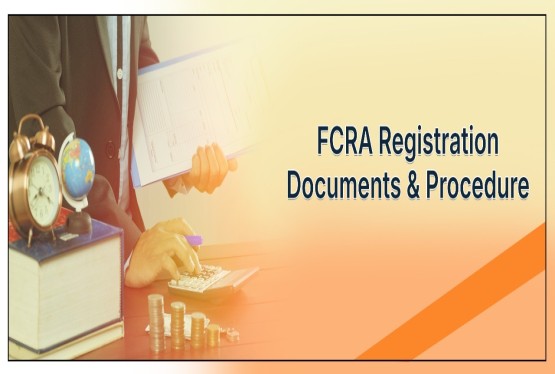The Companies Act 2013, the cornerstone of corporate governance in India, meticulously outlines the framework for the appointment and functioning of directors on a company's board. The board of directors is the primary decision-making body, entrusted with the paramount responsibility of managing the company's affairs, making crucial strategic and operational decisions, and diligently safeguarding the multifaceted interests of its shareholders. However, the dynamic and often complex nature of business operations can necessitate the infusion of specialized knowledge, expertise, or diverse perspectives that might not be readily available within the existing board composition. It is in such circumstances that the strategic concept of "Additional Directors" emerges as a valuable and flexible provision, enabling companies to enhance their board's capabilities.
What are Additional Directors?
Additional directors are a distinct category of non-elected directors who are appointed by the board of directors of a company, rather than by the shareholders in a general meeting. Their appointment is typically for a temporary period, designed to address specific needs or provide specialized skills or knowledge in a particular area that may be lacking or underrepresented on the existing board. Unlike regular directors who are elected by shareholders and often serve for a fixed term, additional directors offer a more agile solution for short-term requirements.
The legal bedrock for the appointment of additional directors is enshrined in Section 161(1) of the Companies Act 2013. This crucial section empowers the board of directors to appoint additional directors at any time between two consecutive Annual General Meetings (AGMs) of the company. A fundamental aspect of their tenure is its temporary nature: additional directors hold office only until the conclusion of the next ensuing AGM. At this AGM, their appointment can be either regularized by the shareholders, meaning they can be re-appointed as regular directors, or they can be replaced. This mechanism provides a flexible pathway for companies to adapt their board structure to evolving business needs without waiting for the annual shareholder mandate.
Why are Additional Directors Required?
The appointment of additional directors is a strategic decision driven by various compelling reasons, primarily aimed at strengthening the board's capacity to make informed and effective decisions. These reasons often revolve around filling critical gaps in expertise, knowledge, or perspective, which can arise due to several factors:
-
Specialized Project or Initiative: Companies often undertake specific projects or initiatives that demand highly specialized knowledge or expertise. For instance, a company embarking on a major technological transformation, a complex merger and acquisition, or a significant international expansion might require a director with deep experience in these domains. An additional director can provide the necessary guidance and oversight without a long-term commitment.
-
Filling Gaps in Expertise: The existing board may, at times, lack expertise in certain crucial areas such as finance, marketing, legal compliance, technology, or corporate governance. An additional director can be appointed to address this specific deficiency, bringing in the required skill set to enhance the board's decision-making capabilities.
-
Diversity and Broader Perspectives: A diverse board, encompassing a variety of backgrounds, experiences, and viewpoints, is increasingly recognized as a key driver of innovation, better decision-making, and improved corporate performance. Additional directors can be appointed to enhance the diversity of the board, ensuring a broader range of perspectives and ideas are considered, leading to more robust strategic discussions.
-
Addressing Vacancies and Transitions: The unforeseen resignation, death, or disqualification of an existing director can leave a significant void on the board, potentially disrupting its functioning or creating a gap in a specific area of expertise. Appointing an additional director can serve as an immediate interim solution to fill this vacancy, ensuring continuity of governance until a permanent replacement is elected by the shareholders.
-
Independent Oversight: In certain situations, there might be a requirement for a non-executive director to provide independent oversight of the company’s operations, particularly to ensure compliance, transparency, and accountability. An additional director can fulfill this role, offering an objective viewpoint free from management influence.
-
Specific Regulatory Requirements: At times, regulatory bodies or industry best practices might necessitate the inclusion of individuals with specific qualifications or independence on the board, which can be temporarily met through the appointment of additional directors.
How are Additional Directors Appointed?
The process for appointing additional directors is straightforward and primarily rests with the board of directors:
-
Board Resolution: The appointment of additional directors is effected by the board of directors through a resolution passed at a duly convened board meeting. It is imperative that the resolution is passed by a majority of the directors present at the meeting. The notice for the board meeting should explicitly include the agenda item for the appointment of the additional director, along with relevant details about the proposed appointee.
-
Filing with Registrar of Companies (ROC): Following the passing of the board resolution, the company is legally obligated to file the particulars of the appointment with the Registrar of Companies (ROC) within 30 days of the appointment. This is typically done by filing e-Form DIR-12, which provides details about the appointment, cessation, or change in designation of directors. Adherence to this timeline is crucial to avoid penalties.
-
Eligibility Criteria: The appointment of additional directors is subject to the same eligibility criteria as other directors on the board. This means that the individual proposed for appointment must not be disqualified under any provisions of the Companies Act 2013, such as being of unsound mind, an undischarged insolvent, or convicted of certain offenses. Furthermore, the individual must possess the necessary skills, expertise, and experience that align with the specific needs for which they are being appointed to serve as a director. The board must exercise due diligence in assessing the suitability of the candidate.
-
Consent to Act: Before appointment, the proposed additional director must provide their written consent to act as a director, typically in Form DIR-2. They must also submit a declaration that they are not disqualified to act as a director in Form DIR-8. These forms are crucial for legal compliance and demonstrate the individual's willingness and eligibility to undertake the responsibilities of a director.
Tenure and Regularization of Additional Directors
As previously mentioned, the tenure of an additional director is temporary, extending only until the conclusion of the next Annual General Meeting (AGM) of the company. This limitation is a key characteristic distinguishing them from regular directors. At the AGM, the shareholders have the prerogative to decide the fate of the additional director. They can choose to:
-
Regularize the Appointment: If the shareholders deem the additional director's contribution valuable and wish for them to continue, they can pass an ordinary resolution at the AGM to appoint the individual as a regular director. Upon regularization, the director will then hold office subject to the provisions of the Companies Act 2013 regarding the tenure and rotation of directors.
-
Not Regularize/Replace: Alternatively, the shareholders may decide not to regularize the appointment. In such a scenario, the additional director's tenure automatically ceases at the conclusion of that AGM. The shareholders may then choose to appoint another individual as a regular director in their place, or leave the position vacant if it's no longer required.
Removal of Additional Directors
While additional directors serve for a temporary period, they can also be removed from office before the expiry of their tenure. The Companies Act 2013 provides mechanisms for their removal:
-
Removal by the Board: The board of directors, which appointed the additional director, also has the power to remove them through a board resolution, subject to the company's Articles of Association and the provisions of the Companies Act. This might occur if the specific need for their expertise has ceased, or if there are concerns about their performance or suitability.
-
Removal by Shareholders: Shareholders also possess the power to remove any director, including an additional director, by passing an ordinary resolution at a general meeting before the expiry of their tenure, as per Section 169 of the Companies Act 2013. This provides an ultimate check on the board's power of appointment.
Conclusion
The appointment of additional directors is a useful provision under the Companies Act 2013 that allows companies to benefit from specialized skills and knowledge. It is important for companies to ensure that the appointment of additional directors is done in a transparent and accountable manner, with due consideration given to the eligibility criteria and the specific requirements of the company. By doing so, companies can strengthen their boards and enhance their ability to make informed decisions that safeguard the interests of all stakeholders.
Frequently Asked Questions (FAQs)
Q1. What is the primary purpose of appointing an additional director?
Ans. The main purpose of appointing an additional director is to bring in specialized knowledge, expertise, or diverse perspectives to the board that may not be available in the existing composition. It serves as a flexible and temporary measure to address immediate requirements, such as overseeing a special project, filling a vacancy, or enhancing governance capabilities.
Q2. How long can an additional director hold office?
Ans. An additional director can hold office only until the conclusion of the next Annual General Meeting (AGM) following their appointment. Their tenure is temporary and designed to meet short-term needs unless shareholders decide to regularize their appointment during the AGM.
Q3. Can additional directors be appointed multiple times?
Ans. Yes, a company can appoint an individual as an additional director multiple times, provided each appointment complies with Section 161(1) of the Companies Act 2013. However, each tenure ends at the next AGM, and shareholders must decide whether to regularize or replace them.
Q4. What formalities are required for appointing an additional director?
Ans. The appointment of an additional director requires:
-
A board resolution at a duly convened board meeting.
-
Filing of e-Form DIR-12 with the Registrar of Companies (ROC) within 30 days of the appointment.
-
Obtaining the individual's written consent (Form DIR-2) and declaration of non-disqualification (Form DIR-8).
Q5. Can shareholders remove an additional director before the AGM?
Ans. Yes, shareholders have the right to remove an additional director before the conclusion of their tenure by passing an ordinary resolution at a general meeting, as per Section 169 of the Companies Act 2013. This serves as a safeguard to ensure that the shareholders retain ultimate control over the board’s composition.












































































_crop10_thumb.jpg)







_Rules,_2025_learn_crop10_thumb.jpg)
























































































_crop10_thumb.jpg)








 in BIS FMCS_learn_crop10_thumb.jpg)










_crop10_thumb.jpg)















_crop10_thumb.jpg)





_Code C-888_learn_crop10_thumb.jpeg)
_learn_crop10_thumb.jpg)
































































_Certificate_learn_crop10_thumb.jpg)

_Certificate_(1)_crop10_thumb.jpg)















_learn_crop10_thumb.jpg)

_crop10_thumb.jpg)


















_Scheme_learn_crop10_thumb.jpg)


_learn_crop10_thumb.jpg)










